Even today in India, much of political life and political violence is centered around the idea of religion. At a time when religion is used to segregate people and emphasize their ‘irrevocable differences’ it might help to take a step back and question, what is ‘religion’? What does religion entail? Are there different ways of understanding how communities build their lives and relationships with non-human entities beyond religion? In this essay, I offer one such example of an indigenous community- the Rais of the Eastern Himalayas, whose worldview and customary practices offer us new ways to understand human existence and the relationships that sustain us.
On a cold winter morning in early December, I arrived at a cave near Darjeeling’s Poobong Fatak. It was the occasion of Udhauli- an important event for the Rai community which marks winter’s onset. The purpose of ‘Udhauli’ is to celebrate the harvest season and mark the descent of animals and birds from the higher mountains to warmer pastures. We began general arrangements for the event like preparation of food and lighting candles. Later, a Mangma (female Rai shaman) would communicate with ancestors and nature, reminding everyone of their responsibilities and genealogical ties. One can say that this event was a way of re-affirming the relationship with ancestors and nature, which is critical to the Rai world and sense of belonging. If one looked at it, on the surface or without sufficient knowledge of the Rai people’s understanding, it would be easy to classify this as a ‘religious festival’.However, there arises a problem that this essay seeks to address.
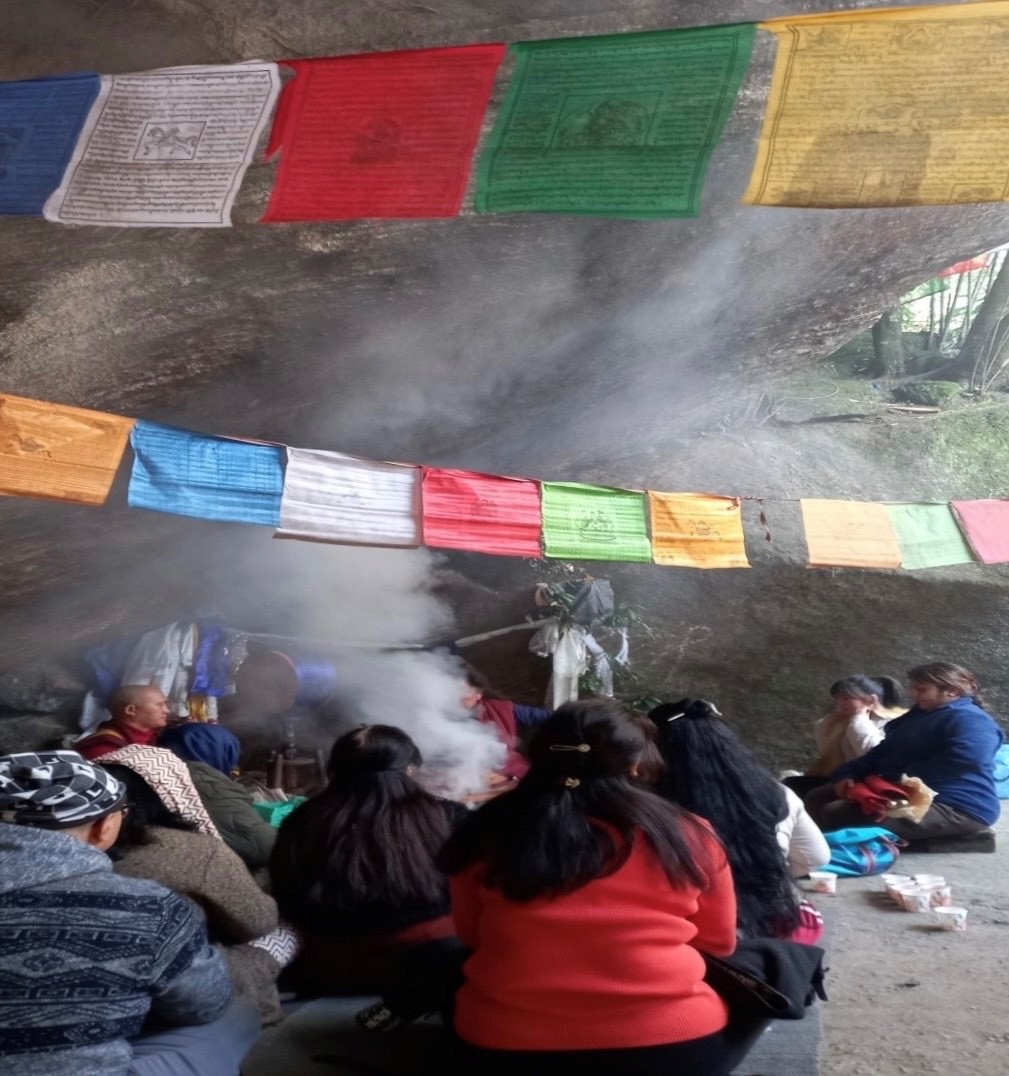
Photo: Rahul Ganguly
When one uses the term ‘religion’, a certain discourse is brought into existence. To classify something as ‘religious’ is to insert it into a chain of significations that it may not necessarily belong to. Thus, the term ‘religion’ does not merely describe what is religious but also brings it into existence. It is constitutive of the phenomenon that it seeks to describe. 6Anil Kiruwa, a senior member of the Rai community in Darjeeling shared, “It is not a religious festival for us. We are not here to worship but to recognize where we come from and to give back to all those who have made this life possible for us- our ancestors, nature, and other living beings. Rai people do not have the idea of God as a deity who is outside of us and who needs to be worshipped through offerings in the traditional religious way. This is our culture and I don’t think it can be called religion”.
In this essay, I primarily look at ‘religion’ as a form of classification, often alien to the practices that are classified under it. By engaging with the category of ‘religion’ and observing how the Rai people, an indigenous community in the Eastern Himalayas understand it, I argue that academics and public discourse often use categories that are ‘one size fits all’ but do not adequately engage with the limits of such categorization. Firstly, I will talk briefly about ‘religion’ as a form of categorization and how indigenous ways of living require us to rethink such forms of universal categorization. Then, through a discussion of how the Rai community sees and understands their practices, I will highlight the limits of terming them as ‘religious’. Finally, I will conclude by talking about how to accentuate indigenous forms of knowledge that do not fit our existing hegemonic languages and categories, without reducing them to such categories.
Religion and Categorization: How we see the world
King (2013) argues that context is critical to understanding indigenous religions and philosophies because indigenous communities share distinctive relationships with the land in which they dwell. Context is essential because it is impossible to understand indigenous ways of being, without understanding the landscape from which they emanate. Context is important because it makes us aware of the conditions that give rise to philosophical and cultural dispositions, which cannot be fully understood without taking these conditions into account. It also helps us to appreciate and reaffirm the relationships human beings have with nonhumans, leading us to a more holistic idea of life.
The ‘Rai way of life’ has been greatly affected by the caste-Hindu colonization of Nepal’s indigenous people, which has affected the Rai cultural practices and shaped the community’s relationship with the ‘religion’ in both Nepal and India.
Scholars such as Talal Asad (1993) have shown that the dominant ideas of the term ‘religion’ are rooted in post-Reformation Europe. However, the experience of colonialism has transformed the term 'religion' into a universal one, which defines practices all over the world despite the obvious contextual differences. Asad (1993) further argues that instead of assuming certain kinds of activities as ‘religious’, one needs to understand how such activities come to be seen as ‘religious’ in the first place. One must understand the categorizing work that the term ‘religion’ does to render certain activities as religious. As a result of this, one must investigate the whole range of disciplinary activities and institutional practices that this category draws upon to do its work (Asad, 1993). The universalization of this category renders the relationship between power, categorization, and colonialism invisible. Kovach (2009) argues that taking indigenous knowledge seriously requires understanding the influence of colonial relationships that have rendered such knowledge irrelevant or illegitimate.
This is an important point because the ‘Rai way of life’ has been greatly affected by the caste-Hindu colonization of Nepal’s indigenous people, which has affected the Rai cultural practices and shaped the community’s relationship with the ‘religion’ in both Nepal and India. Returning to King’s (2013) point about the importance of context in understanding indigenous religions we can question, whether the term ‘religion’ is appropriate to categorize certain indigenous ways of belonging and world-making.
Are Rai customs always religious?
Mr. P Rai, a young entrepreneur in Darjeeling shared, “For us Rais and other indigenous people, the term religion does not have much meaning. Well, I can call some of our practices spiritual- but then spirituality means different things to different people. What is the need to categorize? All I can say is that for us what matters most is respecting our ancestors and the nature that feeds and nourishes us. It is about being ethical and being rooted- to go somewhere we must understand where we come from. Even during our festivals such as ‘Udhauli’ and ‘Ubauli’, we celebrate the agricultural cycle. There is no God that we pray to but rather it's about cultivating respect for all those who co-exist with us humans and non-humans.” Mr. Kiruwa further elaborated, “Our way of life is an ancient way of life- even before this idea of religion came into existence. So much of our ancient knowledge has been lost due to the influence of Hinduism. People see Gautama Buddha as the first Buddha, but he is not. There is someone called Phapha Sangay who is the ancestor of all Mongoloid people and Gautama Buddha can be seen as a part of his genealogy. What people call Yeti is a shaman. There are so many aspects of our knowledge that are getting erased because people are getting disconnected from the land and environment. People often say that we worship nature. That is not correct- why should we worship nature? It is not something outside of us. We live with nature so we pay our respects to it. It is a mutual relationship. There is no question of worshipping. It is about caring for those around us and understanding the messages that our ancestors send us. Our ancestors are our guides- therefore the most important person for any Rai is their ancestor. If the most important person for us exists inside us, what need do we have for an external God”.
For the Rais there is no transcendental conception of a God that resides outwardly. Their traditions and cultural life revolve around a holistic relationship with ancestors, shamans, and the environment, a practice that cannot be reduced to or captured by the term religion. The subtle difference they maintain between ‘honoring’ and ‘worshipping’ is crucial to understanding why ‘religion’ is not a category of experience or explanation for the Rais.
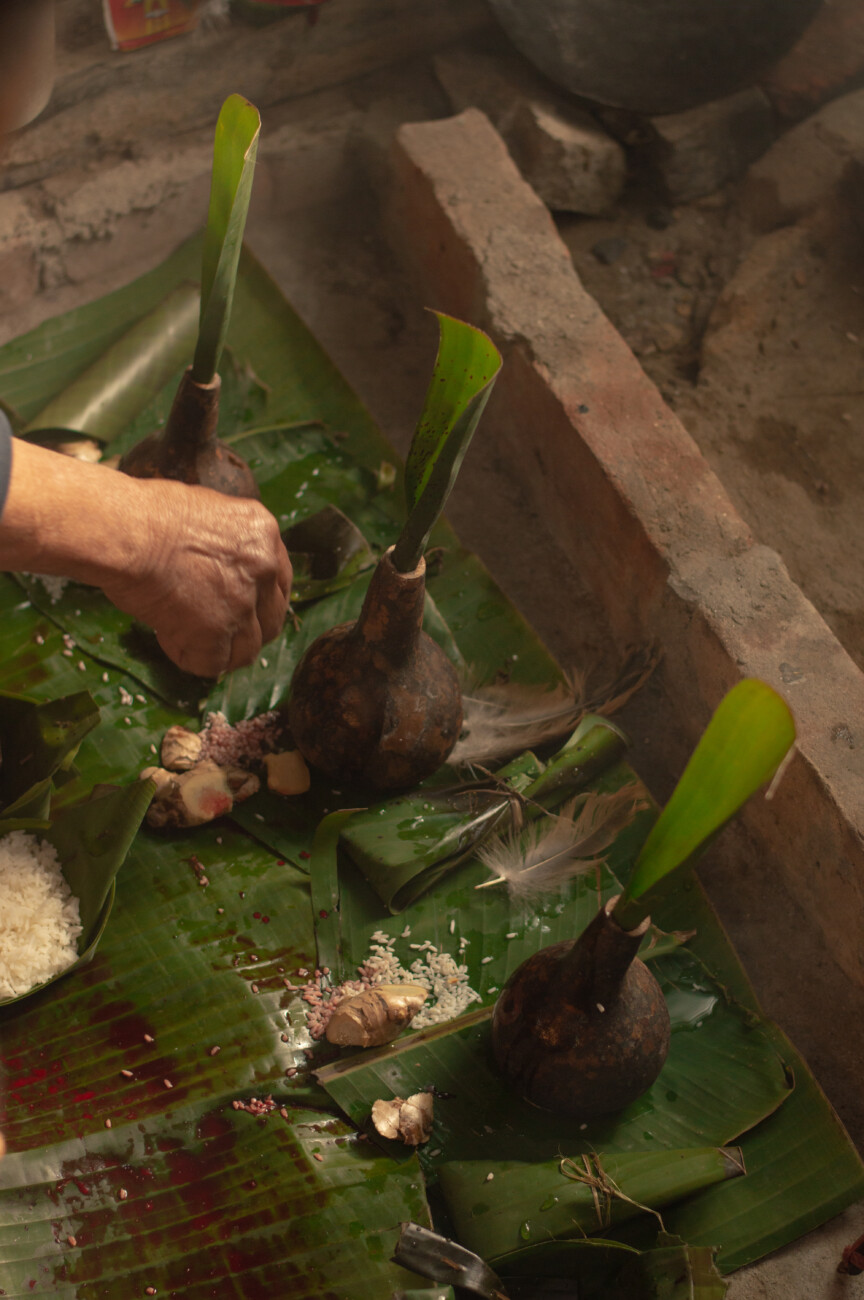
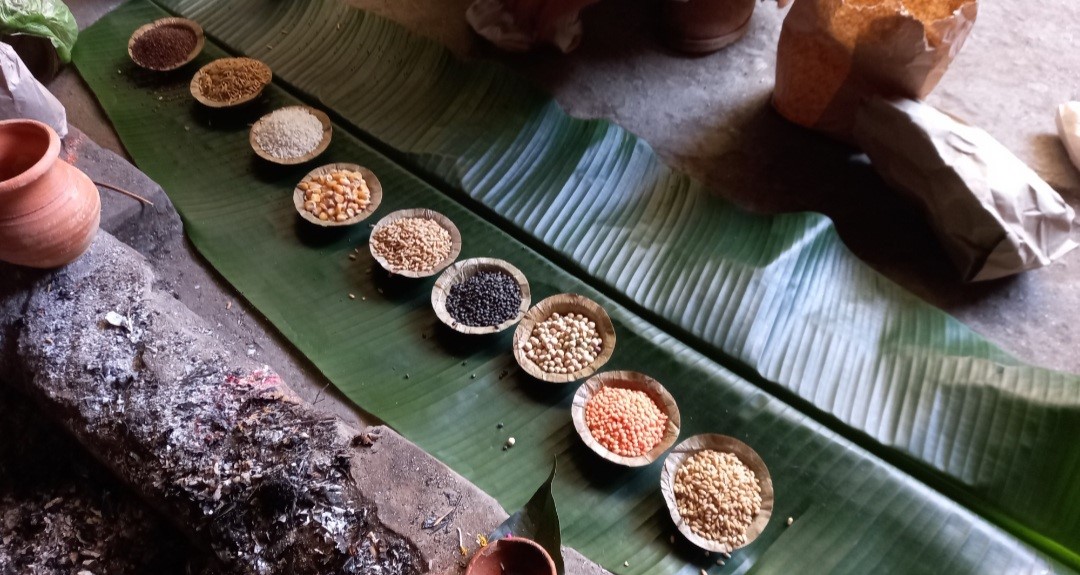
Photo: Rahul Ganguly
Drawing on these two assertions, we can see that there is a discomfort in using the term ‘religion’ or ‘worship’ among the Rai people. While such a sample is not wholly representative, I argue through my fieldwork experiences that such views are held by many Rai indigenous people. For them, denouncing ‘religion’ is a way of differentiating their way of life from that of Hindus, Buddhists, and people of other major religious denominations. Schlemmer (2019) argues that it is very difficult to speak of a ‘Rai religion’ as they do not have a pantheon of gods in the transcendental sense. What is rather important for the Rai is their Mundhum, which can be interpreted as their ancestor’s legacy and tradition.
Sinha (2006) shows that in India, due to the experience of migration and colonial and post-colonial discourses on race and identity, Rais have often identified with the notion of being ‘Nepali’ leading to a loss of distinctive cultural traditions and languages of the community.
For the Rais, rituals serve the purpose of maintaining and restoring their relationship with their ancestors and the environment, re-charging their vitality or life force (Schlemmer, 2019). Rai (2020) argues that the cultural and spiritual life of the Rai revolves around the shamans who act as the link between the ancestors and the current generations, every aspect of Rai life starting from birth to death involves shamans. Given that the Mundhum is a special kind of speech that cannot be reduced to text and is central in the life of the Rais, the shamans are the main vehicle for the transmission of the Mundhum. It is important to understand that for the Rais there is no transcendental conception of a God that resides outwardly. Their traditions and cultural life revolve around a holistic relationship with ancestors, shamans, and the environment, a practice that cannot be reduced to or captured by the term religion. The subtle difference they maintain between ‘honoring’ and ‘worshipping’ is crucial to understanding why ‘religion’ is not a category of experience or explanation for the Rais.
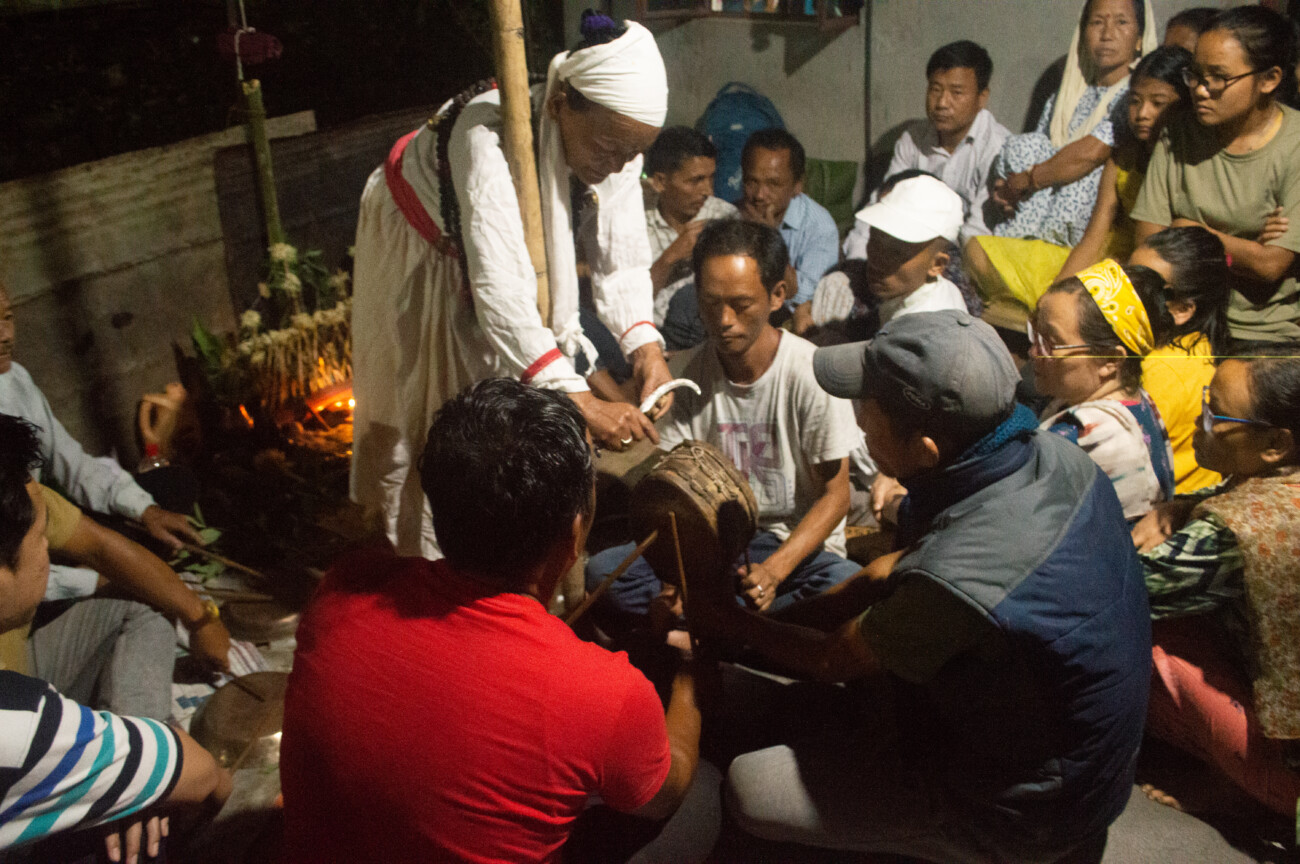
Does this mean, that there exists a homogenous disavowal of religion among the Rais? That would be far from the truth. Many Rais identify as Hindu, Buddhist, or Christian. Yet, this encounter with ‘religion’ must be read through the lens of power, colonialism, and the state in both Nepal and India. Hangen (2010) argues that Nepal in its modern form is a caste Hindu kingdom that has tried to bring indigenous communities within the hierarchical fold of Hinduism and erase their cultural practices, traditions, and languages. Similarly, Rai (2013) argues that Rai traditions have been transformed by the political changes that have taken place in Nepal right from the Greater Nepal unification period of Prithvi Narayan Shah to the establishment of Republican Democracy. As an example, he shows how the use of beef which was central to the Chachhuwa ceremony of the Rais has greatly declined due to the ban on cow slaughter in Nepal. Sinha (2006) shows that in India, due to the experience of migration and colonial and post-colonial discourses on race and identity, Rais have often identified with the notion of being ‘Nepali’ leading to a loss of distinctive cultural traditions and languages of the community.
The emphasis on Rai traditional practices not being religious by some members of the community that I spoke with, can be viewed as a way of marking out a space not determined by colonial and statist notions of power. Without understanding how power and religion intersect, it will be impossible to understand the indigenous Rai engagement and rejection of the category.
Religion must be read in conjunction with the political and social, rather than being an autonomous domain of practice and discourse. It is a discourse of power and Hindu colonization that have shaped how the Rai experience religion as a category and engage with it. The emphasis on Rai traditional practices not being religious by some members of the community that I spoke with, can be viewed as a way of marking out a space not determined by colonial and statist notions of power. Without understanding how power and religion intersect, it will be impossible to understand the indigenous Rai engagement and rejection of the category. This is not to say that terms such as ‘tradition’ or ‘culture’ are innocent terms but when they are used in opposition to the category of ‘religion’, it becomes important to understand why and how they are used in these ways. It is here that the history of colonization and its relationship with religion becomes important to understand, this helps us acknowledge how religion acquires and exercises its authoritative status and why it is also rejected.
Conclusion
This essay is not an anthropological or historical study of the Rai community in the traditional sense. Rather by emphasizing the ways in which certain members of the community distinguish their practices and traditions from ‘religion’, the essay attempts to question the usefulness of categorization, especially in the case of universal categories. Scholars of indigeneity across the world have shown that indigenous knowledge is constituted by values such as respect, coexistence, reciprocity and recognizing the importance of inter-relationships. This is exactly what most of the community members I interacted with shared about their ways of being in the world. Their words were emphasized by the actions. After the Udhauli celebrations, care was taken to properly clean up the cave site, removing all litter and carrying it back. A deeply embodied and moving relationship with the land was clearly visible and care was taken not to disturb any aspect of the landscape that was not necessary. What I witnessed was an attitude of care and gratitude rather than of fear or reverence.This is not to say that such attitudes do not exist among those who identify as religious. It is not a question of comparing individual affective attitudes, but it is important to see how categorical differences exist and operate.
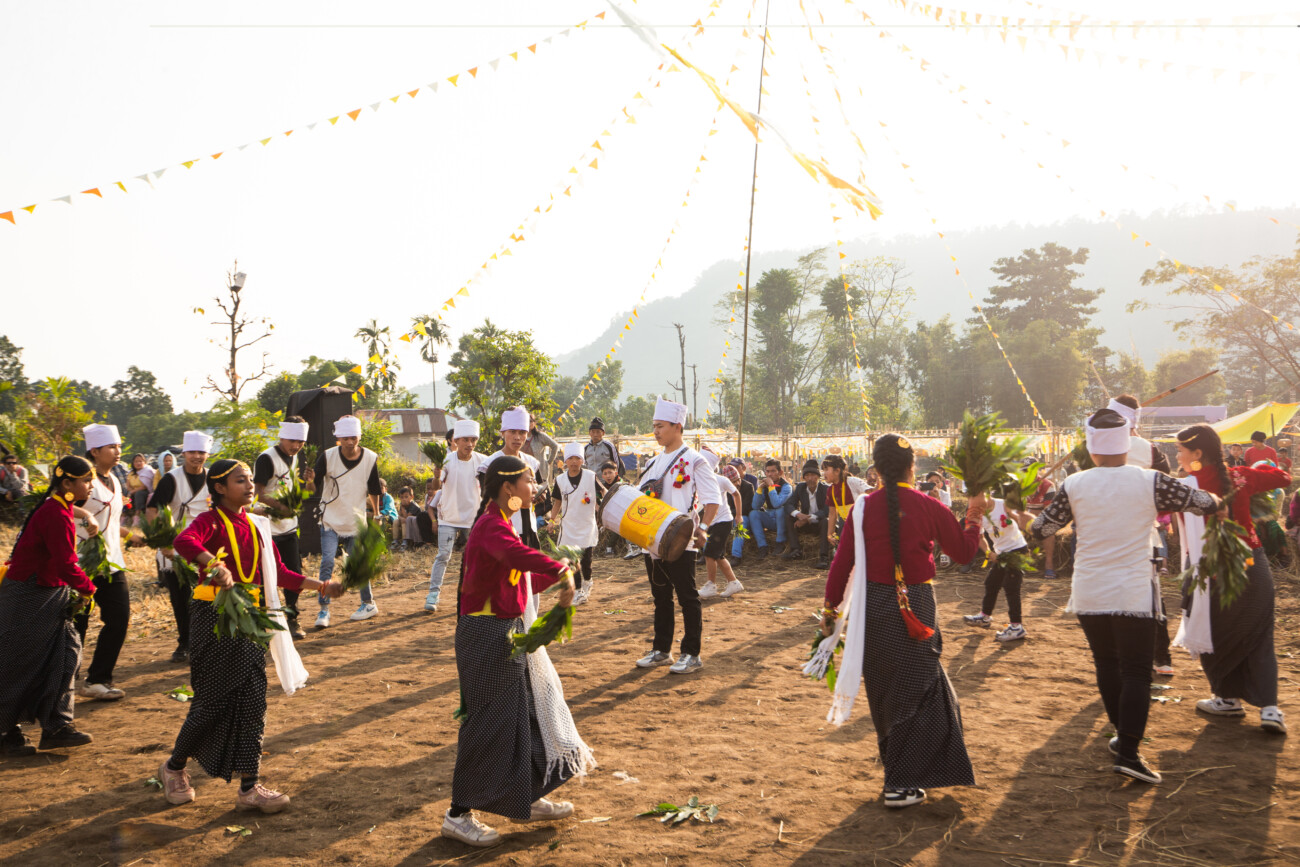
In a world where mainstream ideas of religion and development have constantly brought about violence and erasure of indigenous ways of life, it is time to learn more than a thing or two from indigenous practices about harmonious and respectful living.
Kovach (2009) argues that a relational worldview is one that takes relationships between all life forms that exist within the natural world seriously. Such an understanding is central to Rai ethics and community life. It is such an approach that led many with whom I interacted, to distance themselves from what they saw as the institutional grandeur and transcendence that religion entails. Does this mean, that ‘religion’ as a category of analysis is not a useful one? Far from it, this essay argues that ‘religion’ itself must be seen relationally to make sense of the discursive practices that give religion its authority.Rather than trying to understand indigenous worldviews through external categories, there is a need to take the indigenous understanding as something valuable.In a world where mainstream ideas of religion and development have constantly brought about violence and erasure of indigenous ways of life, it is time to learn more than a thing or two from indigenous practices about harmonious and respectful living.
References
Asad, T. (1993). Genealogies of Religion: Discipline and Reasons of Power in Christianity and Islam. Baltimore and London: The John Hopkins University Press.
Hangen, S. (2010). The Rise of Ethnic Politics in Nepal: Democracy in the Margins. Abingdon: Routledge.
King, S. (2013). ‘Context Matters: Studying Indigenous Religions in North America’. Religion Compass, 7(11), 498-507.
Kovach, M. (2009). Indigenous Methodologies: Characteristics, Conversations and Contexts. Toronto: University of Toronto Press.
Rai, P. (2013). ‘Influence of Political Changes in rituals of Kiranti Rai Community’. Researcher, 1(2), 72-80.
Rai, S. (2020). Roots and Routes of Tribalism: A Study of the Kirati Khambu Rai Community of the Darjeeling Hills. PhD Thesis. Department of Sociology: University of North Bengal.
Schlemmer, G. (2019). ‘Following the Ancestors and Managing the Otherness’. In M, Carrin ed., Encyclopedia of the Religions of Indigenous People of South Asia. Leiden: Brill.
Sinha, AC. (2006). ‘Search for Kirant Identity: Trends of De-Sanskritization among the Nepamul Sikkimese’. The NEHU Journal, IV (1 & 2).
Rahul Ganguly is a PhD student in the Department of Humanities and Social Sciences at IIT Delhi, working on the relationship between urbanism, development, and identity formation in Darjeeling and Kalimpong. He completed his BA and MA in Sociology from Presidency University, Kolkata. His research interests include urban futures, political sociology, ethnicity, and the Eastern Himalayan region. When not working on his dissertation, he enjoys playing football and cooking.
I am immensely grateful to Anil Uncle, Karma Choch, Pranim Da, Binita, and numerous others from Darjeeling who allowed me to be a part of the Udhauli and Ubhauli celebrations. Also, for the many lessons and discussions on what it truly means to be indigenous mountain people. I am also very grateful to Bibhusha and the Sikkim Project team for giving me this opportunity to share my work on such a wonderful platform.
3 comments on “BEYOND THE PRISM OF RELIGION: UNDERSTANDING RAI WAYS OF BELONGING IN DARJEELING”
Leave a Reply
Latest Posts
Latest Comments
No 'Comments_Widget_Plus_Widget' widget registered in this installation.


Do you mind if I quote a few of your articles as long as I provide credit
and sources back to your webpage? My blog site is in the very same niche as yours and my users
would really benefit from a lot of the information you present here.
Please let me know if this alright with you.
Thanks a lot!
Wonderfully written congratulations for completion of your project and all the best for your future endeavours. Reach for the stars and may you connect with your own.
Thank you so much choch!